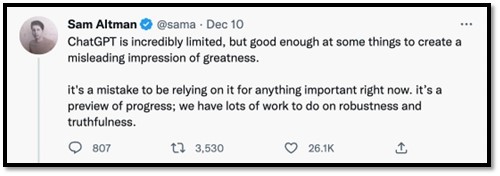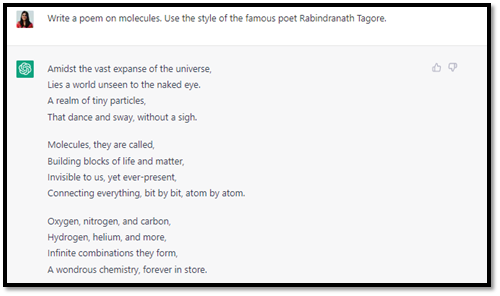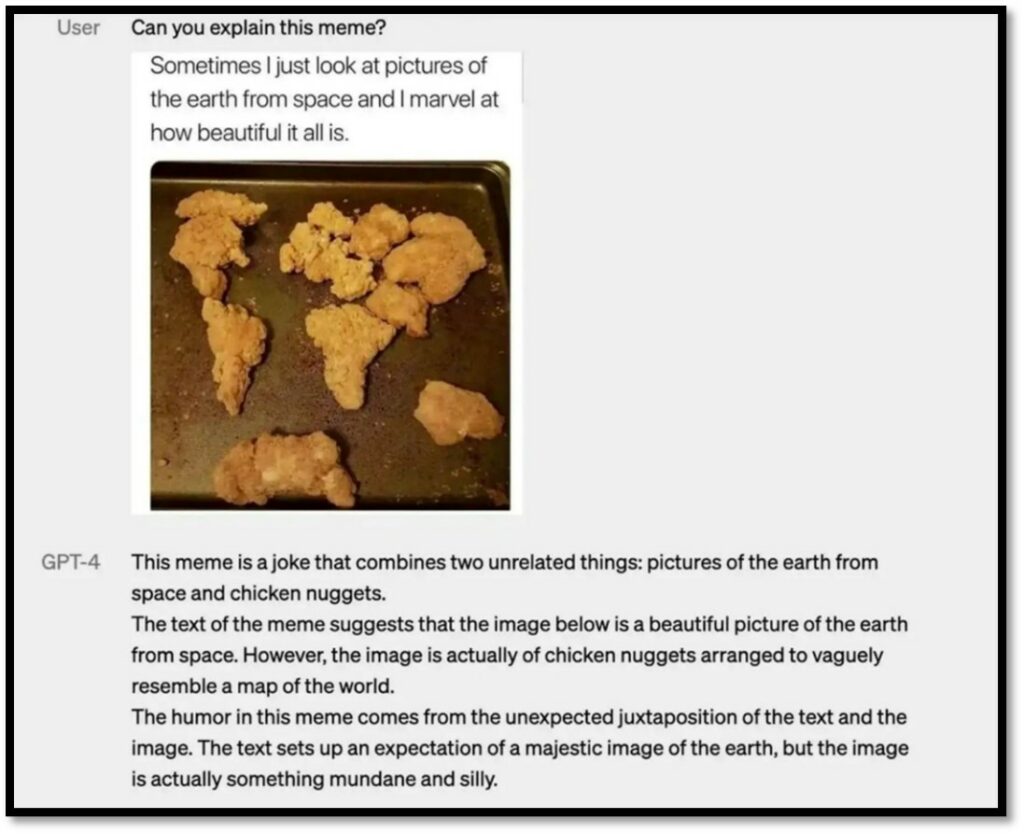If you’ve been browsing the internet lately, you have probably already heard of or wanted to know what is ChatGPT, the AI chatbot that has been making waves in the world of natural language processing. ChatGPT is a large language model tool based on the newest version of OpenAI’s GPT (Generative Pre-trained Transformer) architecture, making it one of the most advanced AI language tools ever created.
But behind the chatter and buzz surrounding ChatGPT lies a crucial question: What is ChatGPT, and why is the world talking about it?
In this article, we will aim to explain what is ChatGPT and how does ChatGPT work, most importantly, how has it been trained to be the chatbot of our dreams. We’ll dive into the technical details behind ChatGPT’s architecture and training process, while also exploring some of the ways the tool can be used for research.
So, what is ChatGPT?1,2,3
ChatGPT, short for Chat Generative Pre-Trained Transformer, is an advanced large language model (LLM) tool that generates human-like text in response to prompts.
- The “Generative” in GPT denotes its ability to produce natural language.
- “Pre-trained” refers to the finite dataset on which the model was trained.
- “Transformer” denotes the underlying machine-learning architecture that powers GPT.
GPT-3, the third iteration of the GPT series, is the underlying technology that enables most of ChatGPT’s capabilities. GPT-3, which has been trained on 570 gigabytes of text and has 175 billion parameters, was preceded by GPT-2 and GPT. Earlier iterations of the GPT models are equally useful, but GPT-3 and the finely tuned GPT-3.5 iteration are much more powerful and the reason behind what ChatGPT is today.
A recent addition to this series is GPT-4, a successor of GPT-3, which is capable of processing up to 25,000 words, handling images, and more nuanced instructions than GPT-3.5.
Sam Altman, OpenAI’s Chief Executive Officer, tweeted that GPT-4 was the “most capable and aligned” model yet, though “it is still flawed”. He added that it is “more creative than previous models, it hallucinates significantly less, and it is less biased”.4

How does ChatGPT work and how was it trained?1
ChatGPT is not a model trained from scratch, but rather a refined version of GPT-3.5, which itself was a refined version of GPT-3. The original GPT-3 model was trained using an immense dataset of internet-sourced data (570 gigabytes of text and 175 billion parameters), including text scraped from Wikipedia, Twitter, and Reddit.
The training process for GPT-3 involved a combination of Supervised Learning and Reinforcement Learning through Human Feedback (RLHF). During the Supervised Learning stage, the model was trained on a large dataset of internet text. The Reinforcement Learning stage involved training the model to generate more accurate and human-like responses that would align with what humans consider correct.
So, when you sign in to the ChatGPT website and prompt it to “write a poem on molecules in the style of Rabindranath Tagore”, you receive a poem that looks just like something Rabindranath Tagore would write. This is because of ChatGPT’s training.

Think about it. After you’ve read every page of your school textbook, you can likely answer any question from it with ease. That’s because you’ve learned the material. ChatGPT works the same way—it learns.
But while you might only read a few hundred books in your lifetime, ChatGPT has already consumed a massive amount of content available online. That’s an enormous amount of all kinds of information, including poems of Rabindranath Tagore. So, of course, ChatGPT has processed all the poems and identified patterns in them. It then uses that knowledge to predict any other poems similar to what Tagore might write.
What is ChatGPT capable of doing?
With an extensive range of parameters, it is difficult to put a cap on what GPT-3 can do. To point out a few things, the ChatGPT model is restricted to language with a good, in-depth understanding of the spoken and written word but it can’t produce video, sound, or images like its brother Dall-E 2 can. From creating alternate universe rom-coms and poems about arbitrary items to writing research papers and explaining complex topics like quantum mechanics in simple terms, its capabilities are impressive.
It’s important to note that while ChatGPT cannot produce or understand images, GPT-4 can accept both images and text as inputs or prompts. GPT-4 is based on the multimodal model that makes it capable of analyzing and responding to images submitted alongside prompts and answering questions or performing tasks based on those images. It can handle massive text inputs and remember and act on up to 25,000 words at once, allowing it to take an entire novella as a prompt.

In a demo, GPT-4 was able to describe why an image was funny and even created a working website based on a rudimentary hand-drawn sketch. 5
The new capabilities of GPT-4 are exciting and showcase the potential for AI-powered language and vision models to create and innovate in new and exciting ways.
Can ChatGPT ease the lives of researchers?
ChatGPT is a powerful tool for medical researchers and scientists, offering a range of services such as crafting articles and abstracts, literature research, data summarization, structure suggestions, reference and title assistance, and even generating full paper drafts.6
It can generate text on a wide range of topics and has recently, even written an entire letter to the editor, answering the author’s questions.7
AI research assistants like ChatGPT can also help in literature search by finding academic papers, summarizing their conclusions, and highlighting areas of uncertainty. They can aid physicians in quickly gaining an understanding of the current state of knowledge on a topic and identifying potential gaps for further study. However, there are some limitations here in terms of its knowledge of latest data and a tendency to come up with sometimes unreliable or incorrect information presented in a plausible manner.
There are several instances of the AI writing tool being used to write academic essays and create research paper abstracts. Researchers have also recently published scholarly articles and preprints that have assigned ChatGPT as an author in research papers.
While we have AI tools that help researchers visualize data based on inputs, this task could potentially be automated in the future. Wouldn’t it be interesting to have AI automatically generate figures, tables, and other visual elements to aid in summarizing data?
Conclusion
Trained on a massive dataset and human language references, ChatGPT has the ability to generate responses that are remarkably conversational and human-like. However, it is important to recognize that ChatGPT is not a human being and has its limitations in terms of its ability to understand context, nuance, and emotions.
As we continue to develop and refine AI technologies like ChatGPT, it is essential that we consider both their potential benefits and their potential drawbacks, and that we work to ensure they are used in ways that are ethical, responsible, and respectful of human dignity.
References:
- Dilip Kashyap. What is ChatGPT OpenAI and How it is Built: The Methodology Behind it. Dec 31, 2022. https://levelup.gitconnected.com/what-is-chatgpt-openai-how-it-is-built-the-technology-behind-it-ba3e8acc1e9b
- Open AI. https://platform.openai.com/docs/models/gpt-3
- Open AI. https://openai.com/research/gpt-4
- Sam Altman on Twitter. https://twitter.com/sama/status/1635687853324902401?lang=en
- YouTube video on how ChatGPT created a working website. https://www.youtube.com/watch?v=outcGtbnMuQ&feature=youtu.be
- King M.R. The future of AI in medicine: a perspective from a Chatbot. Annals of Biomedical Eng. December 26, 2022. Available online at https://link.springer.com/article/10.1007/s10439-022-03121-w
- Hutson M. Could AI help you to write your next paper? Nature. October 31, 2022. Available online at https://www.nature.com/articles/d41586-022-03479-w
Paperpal is a comprehensive AI writing toolkit that helps students and researchers achieve 2x the writing in half the time. It leverages 21+ years of STM experience and insights from millions of research articles to provide in-depth academic writing, language editing, and submission readiness support to help you write better, faster.
Get accurate academic translations, rewriting support, grammar checks, vocabulary suggestions, and generative AI assistance that delivers human precision at machine speed. Try for free or upgrade to Paperpal Prime starting at US$19 a month to access premium features, including consistency, plagiarism, and 30+ submission readiness checks to help you succeed.
Experience the future of academic writing – Sign up to Paperpal and start writing for free!


